Green beans - what kind of plant is it and how to grow it?
The beans are divided into varieties - in the form of large hard beans and immature green shoots, called the pod species. Legumes are very much appreciated in cooking, their addition to the dish saturates the culinary delight with unique taste. Therefore, many people strive to grow a plant on their own in their own backyard. To complete the task, it is worth finding out how green beans differ from asparagus. What are the best varieties for rooting in the soil and the growing process.
Content
- Green beans - what are they?
- What is the difference between green beans and asparagus?
- The best green beans to grow
- Terms and rules for planting seeds in the ground
- Green Bean Care Tips
- Diseases and pests
- The composition and useful properties of beans
- Harm and contraindications for use
Green beans - what are they?
Bean pods have thick walls, between which small peas are sandwiched. In most cases, legumes are used to prepare various culinary dishes. Plant cultivation is practiced all over the world. This is due to the fact that the product has an increased amount of nutrients found in green pods.
Green beans are the unripe, fleshy pods of common grain beans.
If the plant is purchased frozen, then you need to pay attention to the fact that the pods should be medium in size, but not enlarged. If the volume in diameter is exceeded, then there is a possibility that the beans were overexposed on the shoots and harvested at the wrong time. Due to this, coarse fibers are present in the structure of the product.
When buying fresh asparagus beans, you should try to break the pod. When breaking, a characteristic crunch should be heard. The pods should look young and fresh in appearance. When bitten, a sweetish aftertaste is felt.
By its structure, the pod can reach 40 cm in length. Some of its varieties, under favorable conditions, stretch to a meter. In China, due to its specific length, the plant was called snake.
What is the difference between green beans and asparagus?
The differences between the varieties of legumes - asparagus and leguminous ones - are minimal:
- Asparagus beans are a variety of green beans. The only significant distinguishing mark is the length of the ripening pods.
- In addition, there are no partitions between the grains in the asparagus-type pods. They fully merge, forming one integral structure. In asparagus beans, the valves have a softer structure. Such a process is revealed due to the fact that there is no hard parchment layer in it. Due to this, the asparagus variety is more appreciated in cooking than the legume variety.
- Green beans are widely used in the manufacture of dishes, as well as in medicine and cosmetology.It is a low-calorie food that contains a significant list of nutrients, vitamins and minerals, as well as organic substances and amino acids.
- If the seeds ripen in green beans, then their appearance differs from ordinary ones, in smaller size and a rigid structure of fibers. Cooking the beans requires a lengthy steeping process and an extended cooking time using elevated temperatures.
- The asparagus culture, in turn, has a more subtle taste. Moreover, its taste vaguely resembles asparagus. It is thanks to this nuance that the plant got its name - asparagus.
A common feature of both representatives of the legume culture is that the use of beans can improve a person's condition. The plant, if used correctly, prevents the formation of diseases such as diabetes mellitus, atherosclerosis, hypertension and pathology of the blood vessels.
The best green beans to grow
To grow a leguminous variety of legumes on your own backyard, you must first select the optimal variety that suits all the requirements of the gardener. Among the many species, there are about 50 varieties suitable for consumption, both fresh and thermally processed.
The best varieties of green beans for growing outdoors, according to gardeners:
- Butter King - compact beans, grown as a bush. They ripen early - from the moment of planting to the possibility of harvesting, it takes an average of 45-50 days. The pods have a yellow tint, without the presence of a permanent layer in the structure. The beans can stretch up to 25 cm in length, while the yield is striking in volume. In terms of taste, the fruits are soft and tender.
- Purple Queen - has a bluish-black tone of pods. It grows in the form of a shrub, which reaches a height of 60 cm. The yield per bush is increased, but at the same time the ripening period is average. The pods are up to 20 cm long. The beans are great for preservation for the winter, but when the pods are exposed to elevated temperatures, the hue is lost and transforms into a dark green tone.
- Golden nectar is a climbing legume. The ripening process of fruits from the moment of planting to harvesting has a fairly long framework - 70 days on average. The shade of the pods is deep yellow, the length of the finished product is 20-25 cm. The shrub does not withstand the weight of the beans, it tends to the ground, so it is recommended to install a support next to it as it grows. The plant can be used for preparing culinary dishes, as well as for harvesting for the winter. In some cases, a bush with spectacular hanging pods is grown for decorative purposes.
- Caramel is an early maturing type of fiberless beans. Pods that are short in size grow on it, but with large grains inside the valves. The plant gained its popularity due to its good resistance to various diseases and viruses.
- Deer king - the plant grows in the form of a shrub, has extremely distinctive fruits of taste. The pods are highlighted in bright yellow. Inside the beans there are large grains, dense in structure of a white shade. In favorable conditions of a warm climate, the plant manages to reproduce the crop twice.
There are other types of beans. Therefore, before you start preparing the soil and planting, you should familiarize yourself with the whole variety of legumes of the legume variety.
Terms and rules for planting seeds in the ground
Before you start preparing for planting work, you first need to choose the best growing area. It will not be possible to select the first piece of soil that comes across. This is due to the fact that the culture is quite capricious and requires certain conditions for rooting and maintenance.
For the selection of soil and terrain, specific rules are followed:
- At the beginning of germination of sprouts, sunlight should fall on the site for 12 hours a day. Therefore, it is required to plant the plant on the sunny side, but which subsequently has the ability to be shaded by other trees.
- Curly varieties require support as they grow. It will protect the bushes from drooping to the ground and from the wind.
- Beans grow well on the soil where they used to growpotato, cucumbers, carrot, onion, cabbage and other root vegetables.
- Do not plant on land where sunflowers, legumes, and perennial grasses such as clover previously grew.
- If you plant a bushy variety of beans between rows of potatoes or cucumbers, then additional tying is not required.
Most often, the planting of green beans is organized in mid-May or early June. For planting, the heating of the soil should be monitored. For beans, heating by 5-6 cm would be the best option.At this depth, the soil temperature should be at least + 10 C. Most often during this period, return frosts have long passed, but if a cold snap is predicted, it is recommended to cover the site with plastic wrap for warming ...
It is best to choose a loose soil that is good for moisture and air permeability. Beans are rooting to a depth of 50-60 mm. The stiffer the soil structure, the higher the planting should be.
In any case, 2-3 beans should be placed in the hole - this guarantees the germination of at least one sprout.
For bush varieties, it is necessary to adhere to such a scheme when planting as 15-20 cm between individual holes, and between the rows it is worth leaving an area of 35-40 cm.This gap will allow you to care for the plant. It is not worth doing a lot of rows - 4 strips are enough for cross-pollination. When planting climbing varieties, the distance between the holes for embedding should be left at least 20-30 cm.At the same time, a strong support must be immediately installed next to the seedling.
Green Bean Care Tips
After sowing, the appearance of the first shoots under favorable conditions begins already on the 6th day. Optimal growth is possible at a temperature of at least +20 C. At the same time, it is recommended to protect young shoots from a night decrease in degrees and, if threatened, to cover them with polyethylene for safety.
How to care for beans:
- At the onset of 8-10 days, seedlings are required spud... The procedure is repeated when the sprouts are 2 weeks old. Throughout the growing season, the event is reproduced periodically, as the layer near the plant roots thickens.
- The legume crop is characterized by rapid growth. Therefore, when climbing plants reach 2 meters in height, the growing point must be cut off. This process stimulates better growth of lateral shoots and an increase in the number of fruits.
- Mid-season varieties begin to throw out flower buds 40 days after the first shoots appear. Another 21 days are required for the formation of the ovary. After that, you need to monitor the plantings and monitor their condition. The ripening process takes only 10 days after the formation of the ovaries. If you overexpose the fruits, then the taste of the pods will deteriorate significantly.
- It is imperative that the soil is fertilized before planting the plant. A similar procedure is carried out throughout the growing season. The introduction of nutrients into the soil is carried out during the flowering period, as well as at the time of the formation of fruits. Superphosphate mixed with wood ash.
- Watering for the plant requires full and frequent watering. The shrub requires constant soil moisture. But the introduction of moisture is carried out before the formation of fruits. During this period, the number of irrigations is reduced, but the volume of supplied moisture increases.Additionally, so that moisture does not evaporate quickly, the soil at the base is mulched.
Diseases and pests
Bean seedlings provoke various diseases. Before planting, a careful selection of low-quality planting material is required: remove all wrinkled, darkened, spoiled fruits with holes and other defects. Additionally, before deepening into the ground, treatment should be carried out in a weak solution of Potassium Permanganate.
It is necessary to choose varieties that are more resistant to various diseases. In the southern territories of the country, it is better to land a little later than the established dates. It is recommended, first of all, to provide for the correct crop rotation, providing for the re-planting of legumes in one place only after 4 years.
There are the following diseases that form on green beans:
- Bacterial wilting
- Anthracnose
- Deforming and yellow mosaic
- Powdery mildew
- Rust
- Ascochitosis
To identify a pathological condition, it is recommended to constantly monitor the appearance of the plant. When the first signs are found, it is worth immediately taking appropriate measures to combat the disease. Most often, folk methods are not effective, so you need to immediately apply chemicals.
Among the pests most commonly found on green beans, the following parasites are distinguished: sprout fly, whitefly, aphid and bean weevil.
First of all, you can prevent damage to the shrub by harmful insects by collecting the entire crop in advance. After that, the product is kept in the freezer for 3-4 days. But for reliability, before flowering and after during the beginning of the formation of ovaries, it is worth treating the plant with biological products.
The composition and useful properties of beans
Green beans contain a variety of nutrients. These include lactoflavin, ascorbic and folic acid, micro and macroelements, methylated phenols, and nicotinamide.
Due to the structure of the pods, they are recommended for consumption not only as an elimination of hunger, but also to strengthen the human immune system. If there are no contraindications, then the product can be included in food daily.
When eating green beans, the following positive properties are highlighted:
- Stimulates the normalization and leveling of hormones in the body.
- For men, it affects the improvement of the quality of erection and potency.
- Soluble fiber allows you to saturate the body with small doses of the product, which leads to fat burning and the fight against diabetes.
- The iron contained in the fiber structure helps to normalize the processes in the respiratory system.
- The introduction of the product into the body allows you to get rid of chronic fatigue, feelings of weakness, nourishes the body with energy and vitality.
If the product is introduced into food in a moderate amount without leaning on the plant, then only positive qualities and beneficial effects on the body are revealed. Otherwise, abuse of the product can provoke the development of harm to the internal organs of a person.
Harm and contraindications for use
Before you start introducing legumes into the diet, you must be well acquainted with the contraindications. In some cases, the plant is not allowed for consumption.
There are the following situations in which it is better to refrain from taking green beans, even in thermally processed form:
- With gastric ulcer or duodenal ulcer
- With gastritis with increased production of gastric juice;
- With the development of an internal inflammatory process in the intestine;
- With pancreatitis, proceeding in an acute form.
Care should be taken when consuming the product. Almost all varieties are forbidden to be introduced into the body freshly harvested. Beans must first be thermally processed, and only then taken as food.
This process is due to the fact that in the structure of the fruit there is pheazin, a dangerous substance that negatively affects the human body. Therefore, only after heat treatment of the product, which completely neutralizes all harmful substances, it can be consumed.
Thus, green beans are a green plucked plant. Bean fruits have an increased amount of nutrients, which makes them indispensable in the fight against obesity and the treatment of other diseases. But when consumed, it is worth controlling the volume of beans so as not to provoke an overdose.
More information can be found in the video:



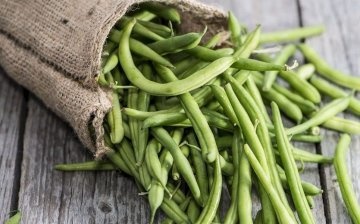


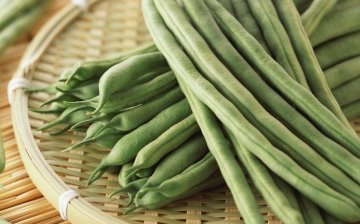














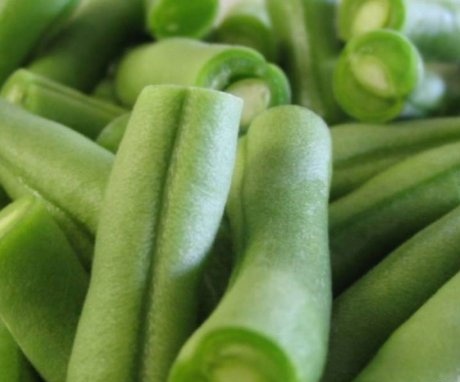
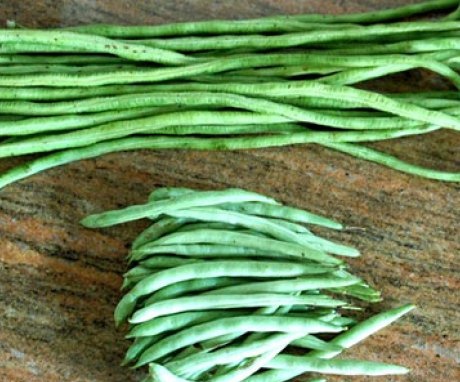
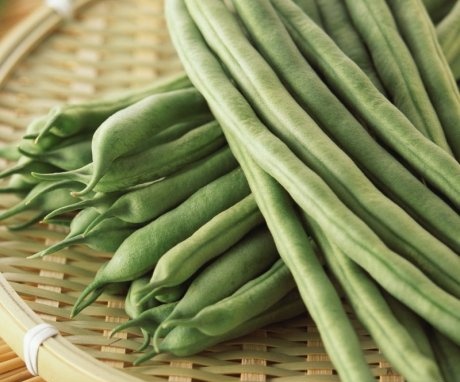
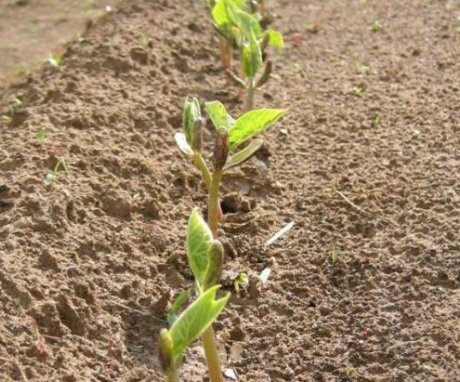
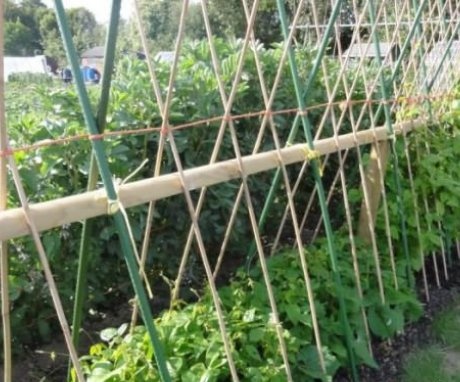
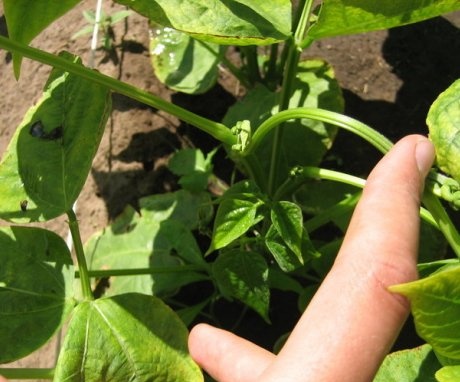
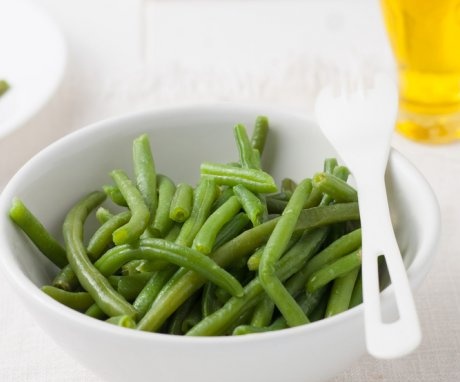

I really love the green beans! It is a healthy and dietary product. Previously, I always bought it frozen, and then my mother began to grow it in her summer cottage. I made a bed next to the potatoes, built a kind of hut and pulled the ropes. The plant curls very strongly. You need to collect it before the pods turn yellow, otherwise it will be hard. Another main point, before freezing or cooking, I advise you to pick up the tail with a knife and pull it slightly, then the vein will come off along the entire length of the pod, if you leave it, the beans will be tough.
I love green beans and I often have them in my diet, however, like all legumes. They must be eaten and necessarily often, because for the body it is a storehouse of vitamins and minerals.
Several varieties of green beans are grown by my mother-in-law in her garden. And then I help her with the harvest. We clean, rinse and freeze in portioned bags for the winter. Own beans are very different from store-frozen beans. I add it to vegetable stews.